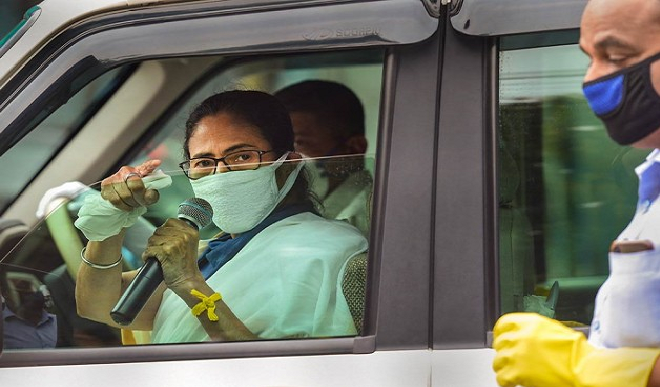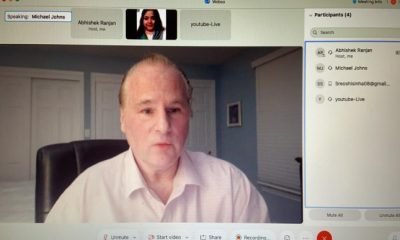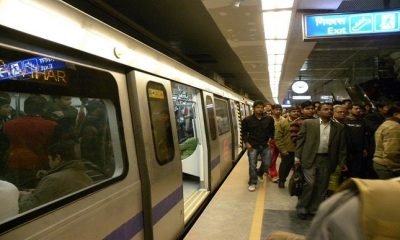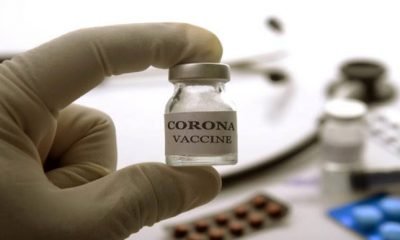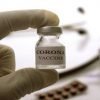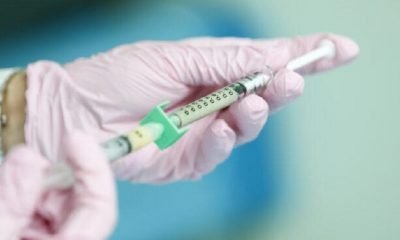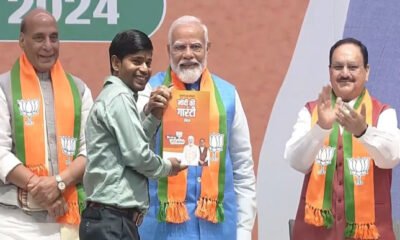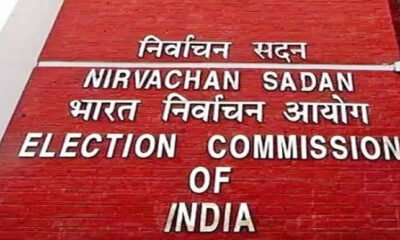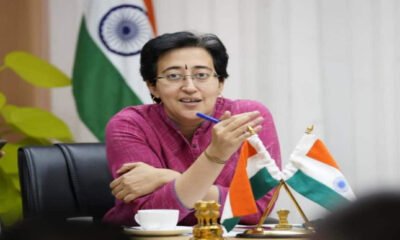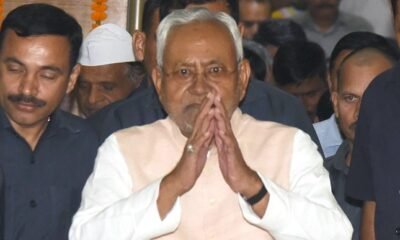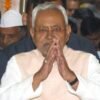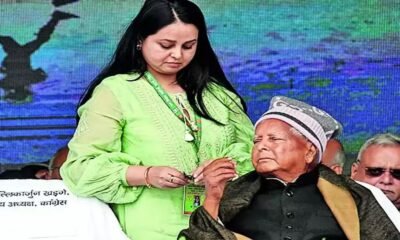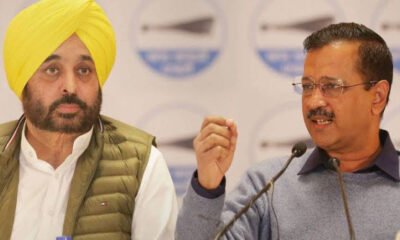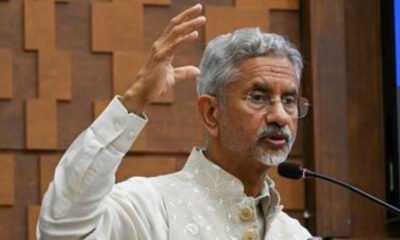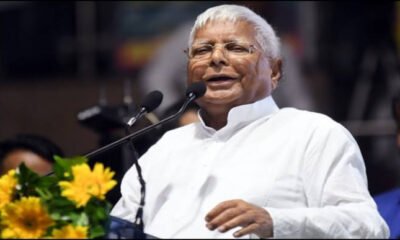Politics
WAR BETWEEN MAMATA AND THE CENTRE: WHY IS WEST BENGAL REPORTING LOW COVID-19 NUMBERS?
As the nation battles COVID-19, West Bengal situation is becoming worrisome as it grapples charges that it withheld information regarding the tally of infected and dead patients and is conducting low-level testing. The government that took proactive measures initially to combat the spread of COVID-19 pandemic is criticized widely
On March 17, West Bengal recorded its first case of COVID-19 when an 18-year-old student, who had returned from London, tested positive for the virus. Soon it came to public highlight that the student was the son of a senior official in the State Home Department. The student had been in contact with his parents and his driver after his return to India on March 15. Despite the government instructions that those returning from abroad must remain in quarantine for 14 days.
On March 23, West Bengal recorded its first COVID-19-related death when a 57-year-old deceased. The case was a matter of concern as it was unclear where the man, a resident of Dum Dum and an employee of the Eastern Railways, had contracted the virus. His family denied Chief Minister Mamata Banerjee’s statement that he had travelled abroad. The west Bengal government came up with proactive measures from the beginning of the outbreak. Between the time of the first reported COVID-19 case and the first COVID-19-related death in West Bengal, the government issued various notifications and orders.
Cybercrimes in times of corona: National spurt in cybercrimes, warns experts
On March 22 the West Bengal government issued the most significant step Titled ‘Complete Safety Restriction’, it announced a complete lockdown in West Bengal from 5 p.m. on March 23, a day before Prime Minister Narendra Modi announced a nationwide lockdown.
A meeting of political parties was called to discuss ways of grappling the deadly virus. The Chief Minister demanded special packages from the Centre and visited markets and hospitals. An image circulating on social media at the time showed her drawing circles on the road in front of a shop to demonstrate to people how to practice physical distancing. Regular meetings with senior health and district officials were broadcast live on local television news channels. The State government announced a ₹200 crore fund and urged people to donate to the State Emergency Relief Fund that had been set up to contain the crisis. Quarantine centers were set up in every district. A separate COVID-19 hospital was identified and made functional.
Soon in the end of March, it became quite comprehensible that the virus had spread to various parts of the state: a resident of Kalimpong in North Bengal died, several in Howrah succumbed to the infection, and Purba Medinipur and Nadia districts also registered cases. Between March 31 and April 2, the death toll jumped from two to seven. Those who had died had no confirmed travel history outside the country.
तेंदुलकर समेत भारतीय क्रिकेट जगत ने दी लारा को जन्मदिन की शुभकामनाएं
How many people have succumbed to the deadly virus in West Bengal?
Is it 33, or 105?
All 105 who died were COVID-19 Positive, but only 33 died of the deadly virus. Others were due to comorbidities the state government on 2nd April engaged a committee of doctors as a special task force against COVID-19 announced that the death toll has increased to seven. However within hours the west Bengal government revised the number of deaths. Chief Secretary Rajiva Sinha said that the death toll was not seven but three, as four people who had died were admitted with “co-morbidities”. On April 3, the West Bengal government issued a notification announcing that an expert committee would be set up for “conducting audit of the suspected deaths due to COVID-19”. The committee’s task was to audit all those people who had died after testing positive for the virus and examine “whether they died of the viral infection or co-morbidities”. The two terms, ‘audit committee’ and ‘co-morbidities’, came to dominate the discourse on the pandemic in West Bengal over the next few weeks.
The official death count remained low but at the same time more and more reports of COVID-19-positive patients dying were published in the media. The figures were updated after the approval from the audit committee. Soon journalist, doctors, and central teams began questioning about the figures.
On April 2 and 3 government did not release the official bulletin and this continued for a couple of days until April-17 when the government finally re-introduced the column which paved way to the suspicion in West Bengal.
Worrisome situation in the state
Amid the nationwide lockdown West Bengal government relaxed the lockdown in the state and the situation went from bad to worse. It allowed several shops to remain open apparently for public relief.
Significant’ increase in cybercrime against women during lockdown: Experts
Towards the end of April, Banerjee announced that tea stalls and local paan shops would be kept open in safer areas of the State. Even buses were allowed to ply in the eight districts of the State which had not recorded COVID-19 cases yet. Soon the government struggled to implement the lockdown as people thronged the markets daily to stock up on groceries and other essential good.
The nightmare of trying to enforce physical distancing got worse on March 25 when thousands of people stranded due to the nationwide lockdown packed into Howrah Station. Banerjee claimed that the government had arranged to feed about 2 lakh migrants from other States, in 711 camps. She also wrote to 18 Chief Ministers urging them to provide essentials to the migrants from West Bengal stuck in their respective States.
Low-level testing
Initially the State government said it did not have enough testing kits and urged the Centre to provide more kits. Officials of the NICED denied any shortage of kits, however, and said that the samples reaching them had reduced significantly. Their statement indicated that the State preferred its own medical colleges to the Central government institution. The State Health Department also alleged that tests conducted using the RT-PCR testing kits provided by ICMR-NICED were proving to be non-conclusive. Every sample had to be tested twice or thrice, it said, which was causing delays. “We received instructions from the ICMR not to distribute the faulty kits. The kits have lost their activity due to problems in storage level at the medical college level or during transportation,” NICED director Shanta Dutta said. This development triggered a major controversy with the Trinamool Congress accusing the Centre of not providing even the most basic resources to fight the pandemic. By the end of April, the State began testing at 14 facilities. It tested 2,000 samples a day. Yet, with over 16,500 samples tested by the end of April, West Bengal still ranked the lowest among the bigger States in terms of testing. It was testing 183 per million of the population, whereas the national average was 613.
Centre-state confrontation
The arrival of the two teams in West Bengal without prior information to the State government set off the scuffle between the Centre and the ruling government, As the panel members lay confined to guest houses for hours, the Minister of Home Affairs (MHA) sent a fresh letter to state government, “asking to make all necessary arrangements for IMCTs” even as the state government maintained its stand that such a team should have been sent after negotiation.
However, Chief Minister Mamta Banerjee had expressed strong objections to the visit of central teams and wrote a letter to the Prime Minister calling the development “unilateral”.
For the next few days the IMCTs raised questions on almost all aspects of COVID-19 management in the State, from the number of ventilators in hospitals, quarantine facilities, delays in test reports, and the use of personal protective equipment for medical staff. Letters addressed to the Chief Secretary by the IMCTs stationed in the city and north Bengal was made public, and dominated the headlines for several days.
Healthcare worker at risk
While the State and Centre was busy writing letters to each other, healthcare providers at State-run hospitals were getting infected at a rapid pace. By the end of April, more than 20 healthcare staff, including at the Medical College, Kolkata, one of the oldest medical colleges in the country, had tested positive. A doctor at the hospital said N95 masks and personal protective equipment available were not enough; that they were available only for those who had the highest risk of getting infected. This endangered the lives of medical professionals, he said. The situation was similar in other medical college and hospitals of the State.
CLERICAL MISTAKES
A 70-year-old man died after being readmitted to a State-run health facility in Kolkata. The hospital had initially released him saying he had tested negative for the virus. A day after he was released, it asked him to get readmitted. The hospital said he was COVID-19 positive and that he had been released by mistake.
The Chief Minister said “minor clerical mistakes” should not be highlighted.


